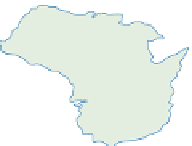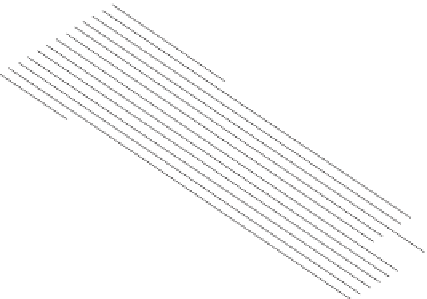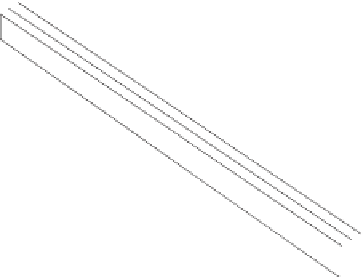Geoscience Reference
In-Depth Information
Horizontal exchange
between columns
Figure 6.16
The basic
characteristics of a three-
the manner in which the
atmosphere and ocean are
split into columns.
Source: After McGuffie and
Henderson-Sellars (2005)
IN THE ATMOSPHERIC COLUMN
wind vectors, humidity, clouds,
temperature and chemical species
Geography
and orography
Ocean grid
Atmospheric
grid
AT THE SURFACE
ground temperature,
water and energy,
momentum and CO
2
fluxes
Vertical exchange
between levels
Bathymetry
WITHIN THE OCEAN COLUMN
current vectors, temperature
and salinity
average the location of maximum intensity is in the areas
of Iceland in the Atlantic and the Aleutian Islands in the
Pacific. Thus climatologists speak of the Icelandic Low and
the Aleutian Low. In the southern hemisphere there are
no distinct areas of the genesis of storms, so lows form
throughout a wide belt.
As a low approaches in the northern (southern)
hemisphere, winds increase in strength, initially from a
southerly (northerly) direction, then become westerly
and, finally, as the low moves away, they veer to north-
westerly (south-westerly) or even northerly (southerly).
The tracks of the lows reach farther poleward in summer
than in winter, so the area affected by the storms varies
seasonally. Nowhere is this seasonal pattern more clearly
seen than over the Mediterranean basin, in California
and at equivalent latitudes in the southern hemisphere
such as central Chile or parts of West and South Australia.
In winter, when the cyclones follow tracks at lower
latitudes, they bring rain to these areas. In summer the
cyclones move away, to be replaced by the subtropical
anticyclones and dry, hot weather. The consequences will
be discussed in
Chapters 25
and
26.
The regular march of cyclones and anticyclones
through the temperate latitudes produces a majority of
winds between north-west and south in the northern
hemisphere and between south-west and north in the
southern hemisphere. This pattern is far from invariable,
however, and depending upon the precise tracks taken by
the lows, and the local topography, winds can blow from
any direction. The prevailing westerlies, therefore, are
anything but prevalent. Moreover, the strong north-south
component of winds in these areas allows a more effective
transfer of energy between the tropics and the polar
regions.
Polar easterlies
Around the poles, beyond the main westerly belt, there is
some evidence of prevailing easterlies. The winds are


























































































































































































































































